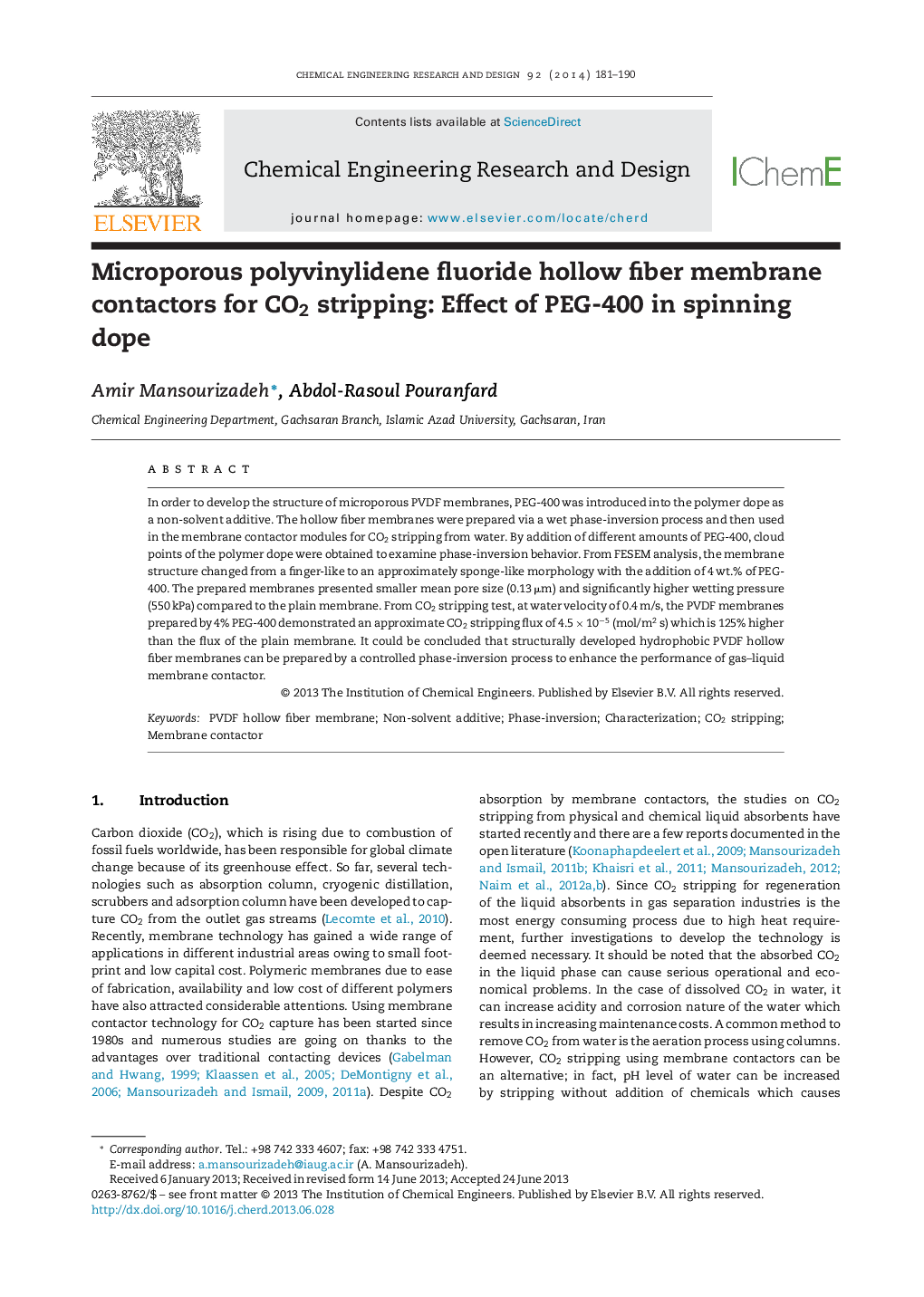| Article ID | Journal | Published Year | Pages | File Type |
|---|---|---|---|---|
| 621517 | Chemical Engineering Research and Design | 2014 | 10 Pages |
•Improved PVDF membranes were prepared by addition of PEG in the polymer dope.•Phase-inversion of the polymer dopes was examined via cloud point measurements.•Addition of 4% PEG resulted in a sponge-like morphology with smaller pore sizes.•Higher CO2 stripping performance was achieved by addition of PEG in the dopes.
In order to develop the structure of microporous PVDF membranes, PEG-400 was introduced into the polymer dope as a non-solvent additive. The hollow fiber membranes were prepared via a wet phase-inversion process and then used in the membrane contactor modules for CO2 stripping from water. By addition of different amounts of PEG-400, cloud points of the polymer dope were obtained to examine phase-inversion behavior. From FESEM analysis, the membrane structure changed from a finger-like to an approximately sponge-like morphology with the addition of 4 wt.% of PEG-400. The prepared membranes presented smaller mean pore size (0.13 μm) and significantly higher wetting pressure (550 kPa) compared to the plain membrane. From CO2 stripping test, at water velocity of 0.4 m/s, the PVDF membranes prepared by 4% PEG-400 demonstrated an approximate CO2 stripping flux of 4.5 × 10−5 (mol/m2 s) which is 125% higher than the flux of the plain membrane. It could be concluded that structurally developed hydrophobic PVDF hollow fiber membranes can be prepared by a controlled phase-inversion process to enhance the performance of gas–liquid membrane contactor.
Graphical abstractCross-section morphology of improved PVDF hollow fiber membrane.Figure optionsDownload full-size imageDownload high-quality image (174 K)Download as PowerPoint slide
